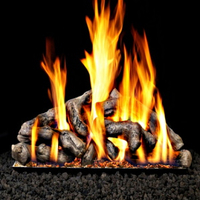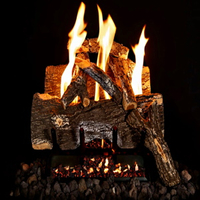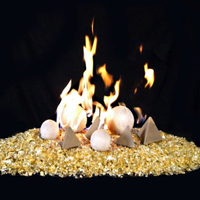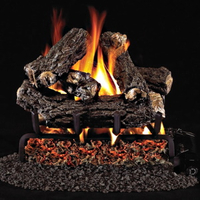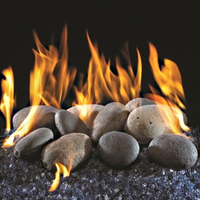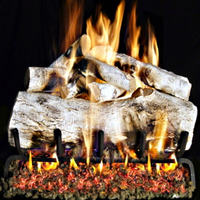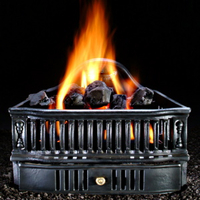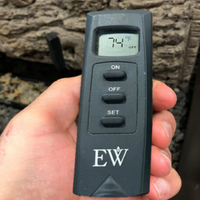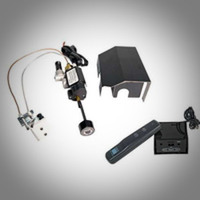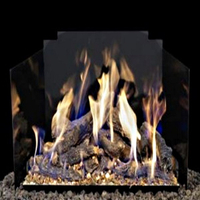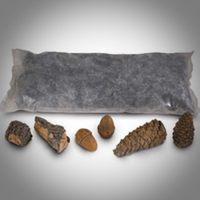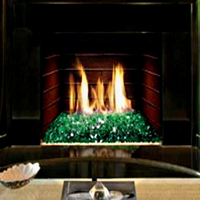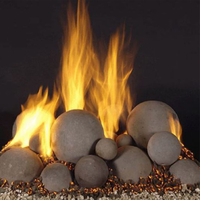Gas Logs
When it comes to gas logs, the modern homeowner is presented with a convenient and efficient way to bring the warmth and charm of a traditional fireplace into their living space. Whether you're seeking to convert your existing wood-burning fireplace or create a new cozy focal point in your home, gas logs offer a remarkable solution that combines convenience, aesthetics, and energy efficiency.
Gas logs for fireplaces have gained immense popularity in recent years due to their ease of use and the ability to create a realistic and mesmerizing flame without the hassle of traditional wood-burning methods. In this comprehensive guide, we'll delve into the world of fireplace gas logs, exploring the different types available, the benefits they offer, and how to choose the perfect gas log set for your needs.
Types of Gas Logs
There are various options to consider when selecting gas logs for your fireplace, each offering its unique set of advantages and aesthetics. The main thing you need to determine before shopping for gas logs is whether you will need a vented or ventless gas log set. Once you have established that, you can begin your online shopping journey. We will also cover the different "categories" of gas logs as there are more than one, and it can get confusing for someone that is not familiar with gas log sets to begin with. See the list below to learn more:
- See Through: These sets are meant for double-sided fireplaces. Traditional gas log sets are made for standard single sided fireplaces. Only one side of the log set displays the decorative logs and burner, so if you had a see through fireplace you would definitely want a see through gas log set to accommodate it.
- Reduced Depth: Fireplaces come in many different styles and sizes, and sometimes the firebox is too small for many standard gas log sets. In these cases, manufacturers make reduced-depth gas logs that are specifically made to fit in shallow fireboxes.
- Contemporary: If you have seen rocks or fire glass on a burner inside of a fireplace, then you have seen contemporary gas logs. The traditional logs are replaced with high temperature fire balls or fire glass which provides a unique contemporary appearance. The burners for these sets are also different than traditional gas logs. Contemporary sets are available in vented and vent free styles.
- Outdoor: Outdoor gas logs use the same kind of logs as indoor sets, the main difference is the burner which is made out of stainless steel so it can withstand the elements.
- Gas Coal Baskets: Coal baskets are a unique option and are also well suited for smaller fireboxes. They are basically a log set surrounded by a metal basket which come in many different sizes, styles, and designs.
Benefits of Gas Logs
One of the primary advantages of opting for gas logs is the convenience they offer. Traditional wood-burning fireplaces require constant attention, from lighting the fire to maintaining it and cleaning up the ash afterward. With gas logs, all it takes is a simple flip of a switch or press of a remote button to ignite the flames. This not only saves you time but also eliminates the need for storing and handling firewood.
In terms of energy efficiency, gas logs have a clear edge over wood-burning fireplaces. They produce consistent and controllable flames, allowing you to adjust the heat output according to your preferences. This level of control translates to better energy utilization and cost savings on your heating bills. Moreover, gas log sets are designed to distribute heat evenly, warming up your space effectively and reducing heat loss through the chimney.
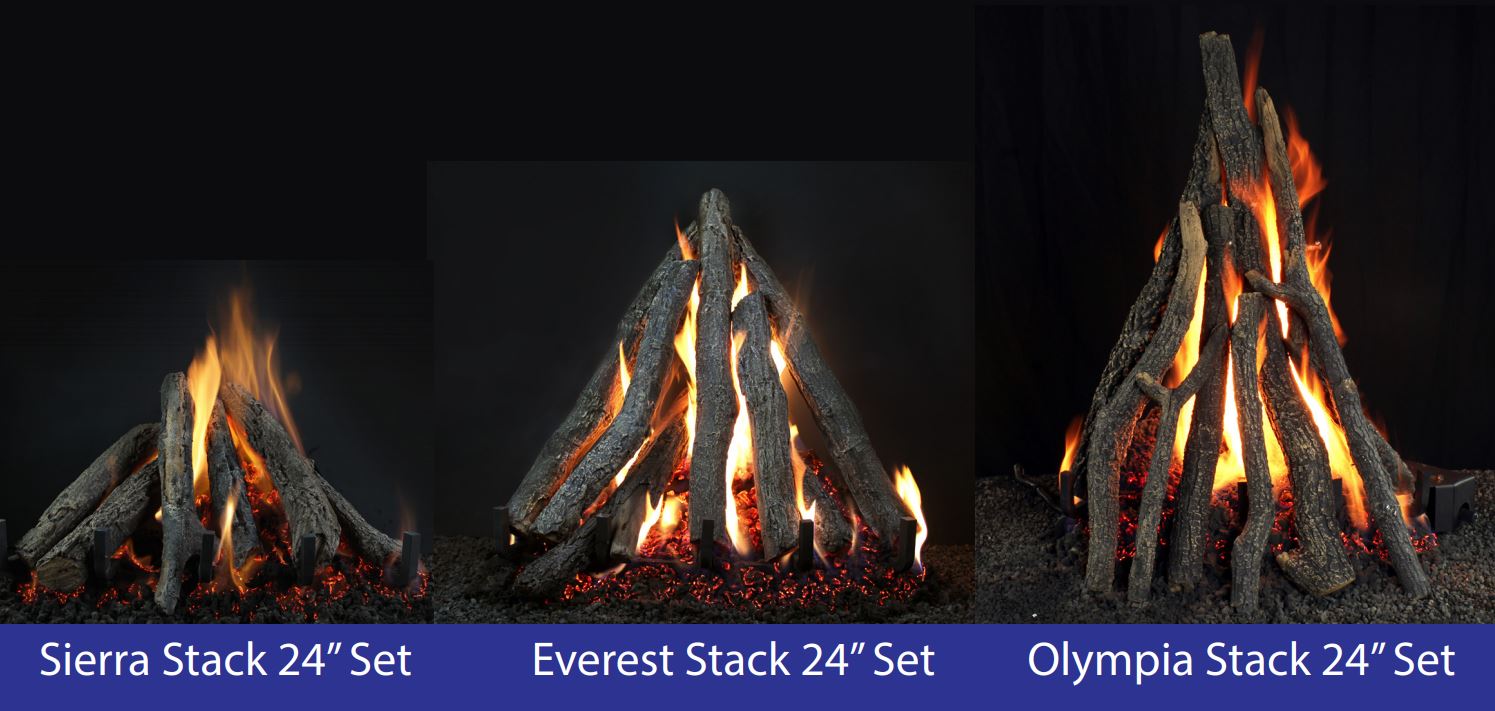
Check out these new Pinnacle / campfire style gas log sets! If you are looking for something unique look no further. Only available in vented units.
Sierra - Everest - Olympia
Choosing the Right Gas Log Set
Selecting the ideal gas log set for your fireplace involves considering various factors to ensure seamless integration and optimal performance. Here are some key aspects to keep in mind:
- Size and Fit: Measure your fireplace carefully to determine the appropriate size of gas logs. A gas log set that's too large or too small can affect the overall appearance and efficiency of the fireplace.
- Venting Options: Gas logs can be vented or vent-free. Vent-free options don't require a chimney and are easy to install, while vented options mimic the appearance of a real wood-burning fire with a more authentic flame. Consider your local regulations and preferences when choosing between these options.
- Ignition Type: Gas logs come with different ignition methods, such as manual ignition or electronic ignition. Electronic ignition offers more convenience, while manual ignition may require a bit more effort but can be a reliable choice.
- Log Styles: Gas logs come in various styles, from traditional oak to contemporary driftwood. Choose a style that complements your home's decor and your personal aesthetic preferences.
- Additional Features: Some gas log sets offer extra features like adjustable flame height and remote control operation. These features can enhance your overall experience and customization options.
Gas Log Installation and Maintenance
Installing a gas log set for an existing fireplace is a relatively straightforward process that can often be done by a professional or as a DIY project, depending on your comfort level with gas connections and appliances. If you're uncertain, it's always best to consult a certified technician to ensure proper installation and safety.
Maintenance of your gas logs is generally simpler compared to wood-burning fireplaces. Regular cleaning involves dusting the logs to prevent buildup and wiping down the burner to keep it free from debris. It's also essential to have an annual inspection by a professional to ensure all components are functioning correctly and that there are no gas leaks.
In Conclusion
Gas logs offer a remarkable way to transform your fireplace into a functional and aesthetically pleasing centerpiece in your home. With the convenience of instant ignition, energy efficiency, and a range of design options, they provide an excellent alternative to traditional wood-burning fireplaces. Whether you're looking to convert your existing fireplace or create a new one, exploring the world of gas log sets can lead to a cozier and more inviting living space. So, take the time to choose the perfect gas logs for your fireplace that align with your preferences, and enjoy the warmth and ambiance they bring to your home.
FAQ's
Q: How to Light Gas Logs?
A: Lighting gas logs is a straightforward process. Start by ensuring the gas supply valve is open. Then, locate the control knob and turn it to the "Pilot" position. Press and hold the knob while using a fireplace lighter or match to ignite the pilot light. Once the pilot is lit, continue holding the knob for about 30 seconds before releasing it. Finally, turn the control knob to the "On" position to activate the flames.
Q: How to Arrange Gas Fireplace Logs?
A: Arranging gas fireplace logs for a realistic and appealing look is essential. Begin by placing the larger logs at the bottom, closer to the burner. Arrange the logs in a way that resembles a natural wood-burning fire, with the smaller logs positioned towards the top. Make sure to leave space between the logs to allow for proper air circulation and combustion.
Q: How to Clean Gas Fireplace Logs?
A: Cleaning gas fireplace logs is relatively simple. Use a soft brush or cloth to remove dust and debris from the logs and burner. Avoid using water or harsh cleaning chemicals, as they can damage the logs' finish. If you notice significant buildup, consider consulting a professional for a thorough cleaning to maintain optimal performance and aesthetics.
Q: How to Install Gas Logs?
A: Installing gas logs can be done by following these steps:
- Prepare the Fireplace: Ensure the fireplace is clean and free of debris. Remove any existing logs or ashes.
- Check Gas Supply: Confirm that the gas supply line is properly connected and the gas valve is turned off.
- Position the Burner: Place the burner in the center of the fireplace, ensuring it's level and securely positioned.
- Arrange Logs: Arrange the logs according to the manufacturer's instructions. Start with the base logs and build up using the smaller logs. Follow the recommended placement for a natural appearance.
- Connect Gas Line: Carefully connect the gas line to the burner, following the manufacturer's guidelines. Use appropriate fittings and sealants.
- Test for Leaks: Turn on the gas supply and perform a leak test using a soap and water solution. If you detect bubbles, there might be a leak. In this case, turn off the gas and consult a professional.
- Light the Pilot: Refer to the manufacturer's instructions for lighting the pilot light and testing the flame.
- Finalize Installation: Once everything is in order, turn on the gas logs and enjoy your new fireplace.
Q: How to Light Pilot on Gas Logs?
A: Lighting the pilot on gas logs involves the following steps:
- Locate the Controls: Find the control knob for the gas logs. It's often near the bottom of the fireplace.
- Turn to "Pilot": Turn the knob to the "Pilot" position and press it in.
- Ignite the Pilot: While holding the knob, use a lighter or match to ignite the pilot light. Continue holding the knob for about 30 seconds.
- Release the Knob: After 30 seconds, release the knob. The pilot light should remain lit. If it goes out, wait a few minutes and repeat the process.
- Turn to "On": Once the pilot light is steady, turn the control knob to the "On" position to activate the flames.
Remember to always refer to the manufacturer's instructions for your specific gas log model. With these answers to common queries, you're better equipped to maintain, operate, and enhance the beauty of your gas logs while enjoying the cozy atmosphere they bring to your living space.

 Vented.jpg?1691607963100)
